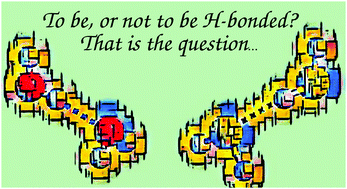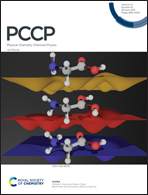The nature of the intermolecular interaction in (H2X)2 (X = O, S, Se)†
Abstract
Hydrogen bonds (HBs) are crucial non-covalent interactions in chemistry. Recently, the occurrence of an HB in (H2S)2 has been reported (Arunan et al., Angew. Chem., Int. Ed., 2018, 57, 15199), challenging the textbook view of H2S dimers as mere van der Waals clusters. We herein try to shed light on the nature of the intermolecular interactions in the H2O, H2S, and H2Se dimers via correlated electronic structure calculations, Symmetry Adapted Perturbation Theory (SAPT) and Quantum Chemical Topology (QCT). Although (H2S)2 and (H2Se)2 meet some of the criteria for the occurrence of an HB, potential energy curves as well as SAPT and QCT analyses indicate that the nature of the interaction in (H2O)2 is substantially different (e.g. more anisotropic) from that in (H2S)2 and (H2Se)2. QCT reveals that the HB in (H2O)2 includes substantial covalent, dispersion and electrostatic contributions, while the last-mentioned component plays only a minor role in (H2S)2 and (H2Se)2. The major contributions to the interactions of the dimers of H2S and H2Se are covalency and dispersion as revealed by the exchange–correlation components of QCT energy partitions. The picture yielded by SAPT is somewhat different but compatible with that offered by QCT. Overall, our results indicate that neither (H2S)2 nor (H2Se)2 are hydrogen-bonded systems, showing how the nature of intermolecular contacts involving hydrogen atoms evolves in a group down the periodic table.



 Please wait while we load your content...
Please wait while we load your content...